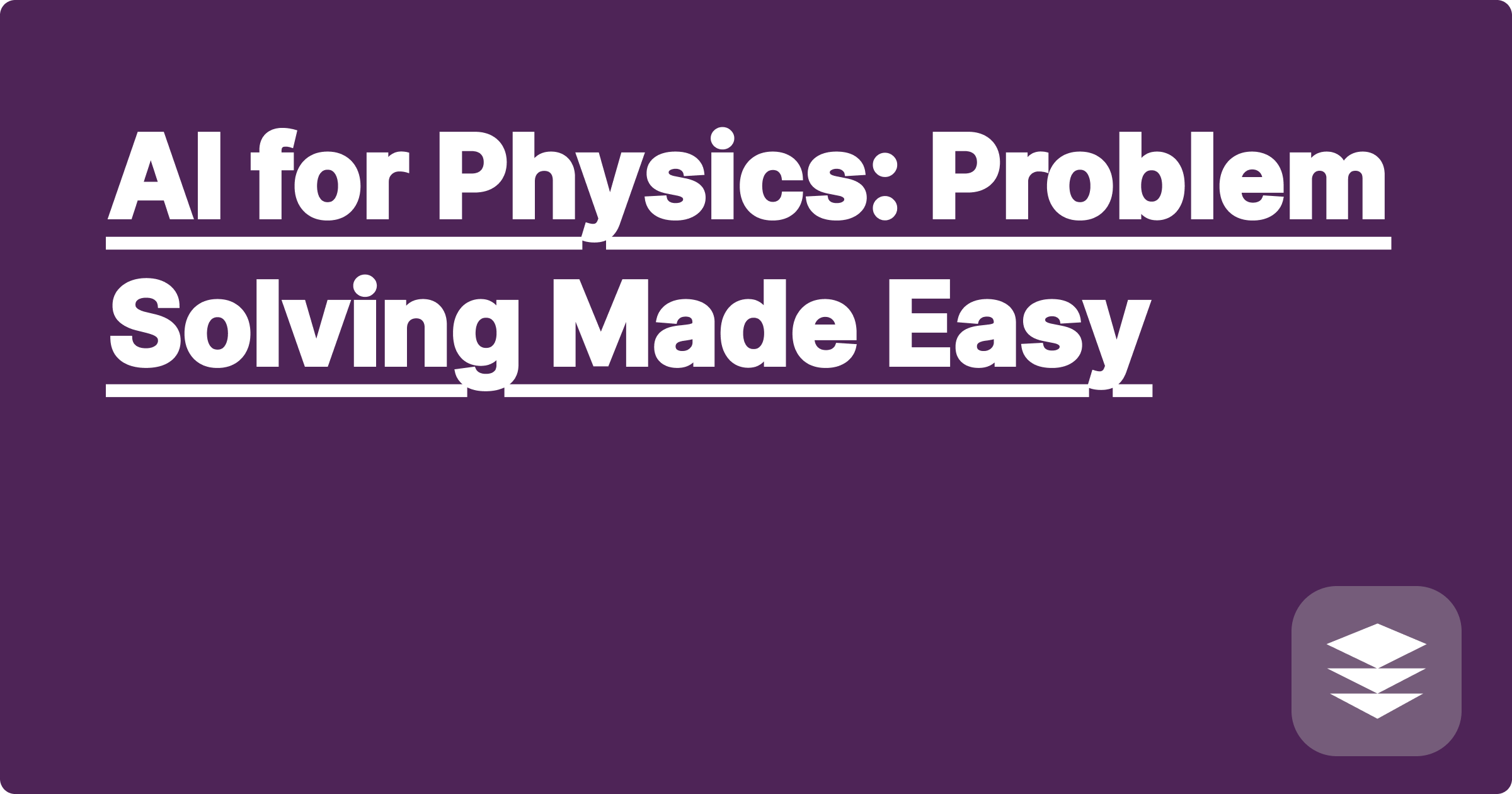
The world of STEM research is often characterized by complex problems, mountains of data, and the relentless pursuit of accurate analysis. For students and researchers alike, this can feel overwhelming, leading to long hours and sometimes, a sense of being lost in the data deluge. But what if there was a way to navigate this complexity with greater ease and efficiency? Artificial intelligence (AI) is rapidly transforming the STEM landscape, offering powerful tools to streamline workflows, enhance data analysis, and ultimately, accelerate the pace of discovery. This blog post explores how AI can be your secret weapon for tackling physics problems, from understanding fundamental concepts to visualizing complex datasets. We'll delve into specific AI-powered tools and techniques, providing practical examples and actionable strategies to boost your productivity and unlock your research potential.
Imagine having a virtual research assistant by your side, capable of crunching numbers, generating visualizations, and even helping you brainstorm new research directions. This is the promise of AI for STEM research, and it's becoming increasingly accessible to students and researchers at all levels. By leveraging these tools effectively, you can not only save valuable time but also gain deeper insights into your data, leading to more impactful research outcomes. Specifically, we'll focus on how AI can revolutionize data analysis and visualization in physics, offering a pathway to more efficient and insightful research.
Physics, as a field, relies heavily on mathematical models and experimental data to describe the universe. Analyzing this data and extracting meaningful insights can be a significant challenge, requiring advanced mathematical skills and often, specialized software. Traditional data analysis methods can be time-consuming and prone to human error, especially when dealing with large datasets. Furthermore, visualizing complex physical phenomena can be difficult, requiring expertise in graphical representation and data interpretation. These challenges can hinder research progress and limit the ability of students and researchers to fully explore the intricacies of physical systems. For example, consider the task of analyzing data from a particle accelerator experiment. The sheer volume of data generated can be overwhelming, and extracting meaningful insights requires sophisticated statistical techniques and computational resources. Similarly, visualizing the behavior of a complex system, such as a turbulent fluid flow, can be challenging without the right tools and techniques.
AI offers a powerful solution to these challenges, providing tools that can automate data analysis, generate insightful visualizations, and even assist with problem-solving. AI-powered platforms like ChatGPT, Wolfram Alpha, and specialized physics simulation software can significantly enhance the research process. ChatGPT can be used to generate code for data analysis, explain complex concepts, and even brainstorm research ideas. Wolfram Alpha is invaluable for performing symbolic calculations, solving equations, and accessing a vast library of scientific data. Furthermore, AI-driven visualization tools can create stunning and informative representations of complex physical phenomena, making it easier to understand and interpret data. These tools are not just for experts; they are increasingly accessible to students and researchers at all levels, democratizing access to advanced analytical and visualization capabilities.
Let's consider a concrete example: analyzing the trajectory of a projectile. First, you can use a tool like Tracker, an open-source video analysis and modeling tool, to extract the projectile's position data from a video recording of its motion. Then, import this data into a Python environment. Using libraries like NumPy and SciPy, you can perform calculations to determine the projectile's velocity and acceleration. Furthermore, you can leverage ChatGPT or Wolfram Alpha to help you derive the equations of motion and understand the underlying physics. Finally, use Matplotlib or other visualization libraries to create graphs of the projectile's trajectory, velocity, and acceleration over time. This entire process, from data acquisition to visualization, can be significantly accelerated and enhanced by using AI tools.
AI-powered tools are transforming various STEM fields. In materials science, AI algorithms can predict the properties of new materials, accelerating the discovery of novel compounds with desired characteristics. For instance, researchers are using AI to predict the band gap of semiconductors, a crucial property for electronic applications. In biophysics, AI is being used to analyze protein folding and predict protein structures, which is essential for drug discovery and understanding biological processes. Furthermore, in astrophysics, AI algorithms are being used to analyze telescope data and identify celestial objects, enabling astronomers to explore the vastness of space more efficiently. These are just a few examples of how AI is revolutionizing STEM research, offering new possibilities for discovery and innovation.
To effectively integrate AI into your STEM workflow, start by identifying specific tasks that can be automated or enhanced by AI tools. This could include data cleaning, statistical analysis, or visualization. Next, explore different AI platforms and tools to find the ones that best suit your needs. Don't be afraid to experiment and try different approaches. It's also crucial to develop a strong understanding of the underlying principles of AI and the limitations of these tools. While AI can be incredibly powerful, it's essential to critically evaluate the results and ensure they are consistent with your understanding of the physics involved. Finally, stay updated on the latest advancements in AI and explore new ways to apply these tools to your research.
Embracing AI in your STEM journey is no longer a luxury but a necessity. By incorporating these tools and strategies into your workflow, you can significantly enhance your research productivity, gain deeper insights into your data, and ultimately, accelerate your path to scientific discovery. Start exploring the vast potential of AI today and unlock a new level of efficiency and innovation in your STEM endeavors. Don't be left behind in this rapidly evolving landscape – embrace the power of AI and transform your approach to problem-solving in physics and beyond.
Master STEM: AI Study Guide & Planner
AI for Robotics: Efficient Simulations
AI Research Paper Assistant: Write Smarter
AI-Driven Data Viz: Explore Datasets
Conquer STEM: AI-Powered Study Hacks
AI for Exams: Ace Your STEM Tests
AI Homework Helper: STEM Problem Solver
AI Study Buddy: Master STEM Concepts